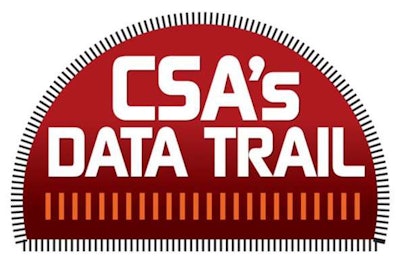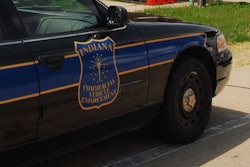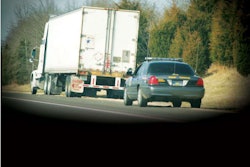As in Georgia and most other states around the nation, brakes rank high, No. 2, in another top-10 inspection-intensity state’s violation priorities. Significant in Illinois’ case, however, is what the violation category’s tied with in the state’s rankings: speeding. Illinois offers a statistical counterpoint to Georgia’s falling inspection numbers. Between 2012 and 2014, Illinois shifted priorities, pouring resources into truck enforcement. It nearly doubled its total number of inspections to replace Nevada in the inspection-intensity top 10, measured per lane-mile, jumping 15 places to No. 7.
 Catch more in-depth state-by-state data and analysis via our CSA’s Data Trail main page, recently updated to reflect year 2014 data.
Catch more in-depth state-by-state data and analysis via our CSA’s Data Trail main page, recently updated to reflect year 2014 data.Rob Dykes, posting on Overdrive’s Facebook page, pointed to observed increased activity the past year at the improved scale facility eastbound and westbound on I-280 in Moline. “They seem to be open 24/7 with the PrePass turned off,” he wrote. “You have to parade through just to get sent to the bypass lane.”
Illinois’ fixed-location inspections were up by a small margin last year, according to the data. However, the vast majority of its increase is attributable to roadside enforcement. The number of such inspections grew by 60 percent from 2013 to 2014. Hours of service, speeding and improper lane changes all appear in the state’s top six violation categories, in addition to equipment/maintenance-related issues.

The first of those categories, hours, was significantly at issue in accidents involving trucks that killed two (and severely injured one) state police officers between November 2012 and January 2014. That created ideal conditions for an increased awareness of truck enforcement throughout the state, says Don Schaefer, Mid-West Truckers Association executive director.
Meanwhile, Schaefer says Illinois’ formerly low inspection numbers were in part due to low staffing. “The state’s budget at that time was way down in terms of on-the-road officers, those guys who could do inspections. I know recently they’ve talked about the number of sworn personnel on the road as being built back up.”
However, Illinois State Police Master Sergeant Todd Armstrong says numbers weren’t down, necessarily, just that priorities shifted. Stakeholders in truck enforcement convened in the aftermath of the aforementioned accidents and refocused enforcement on trucks, accounting for the large inspection increase in 2014. Its 950-odd-member statewide squad comes out of the state’s police academies certified for Level 3 credentials inspections, where a threefold increase was seen between 2012 and 2014, Armstrong emphasizes.
Troopers have emphasized truck inspections particularly on patrol in priority corridors such as the high-traffic region around Chicago (accounting for nearly half of all inspections); in Metro East and the broader region around St. Louis, Mo.; and in and around Effingham on I-70 and I-57.
In Will County, which includes the city of Joliet, due Southwest of the metropolis, and a growing number of intermodal facilities, one particular hotspot of activity made waves after the Mid-West group, responding to member complaints, made it known.
 THE SEVEN-STATE SPEED TRAP | Click here or on the image for a look at the violation priorities of these seven contiguous states. All show speeding within the top six violation categories tracked by Overdrive. Several, furthermore, are top states for moving violations overall.
THE SEVEN-STATE SPEED TRAP | Click here or on the image for a look at the violation priorities of these seven contiguous states. All show speeding within the top six violation categories tracked by Overdrive. Several, furthermore, are top states for moving violations overall.The association alleged entrapment by officers working the roads there at a weight-restricted culvert crossing on a common truck route where confusing signage provided inadequate warning of the restriction. “The officers up there are street-smart,” Schaefer says. “They know the opportunities. The issue with this culvert, which is a simple repair, has been dragging on and on and on.”
After the issue “blew up” following a radio spot given by Mid-West Associate Director Matt Wells on WBBM-AM in Chicago, it got the state’s attention, says Schaefer. “Illinois DOT had said they’d put it on their five-year plan to get it fixed. Now, they say they’ve found the money, and they’re going to fix it” as soon as possible.
It’s another example of how getting involved in the conversations around equity and fairness in inspections, violations and citations at levels above the individual inspector can pay dividends. As Help Inc.’s Steve Vaughn noted in a recent online seminar, much of the carrier-law enforcement interaction never proceeds beyond the inspection-facility level. If you have a problem that needs a remedy, he said, “I’d recommend you get involved at the headquarters level where you can really affect some change.”












